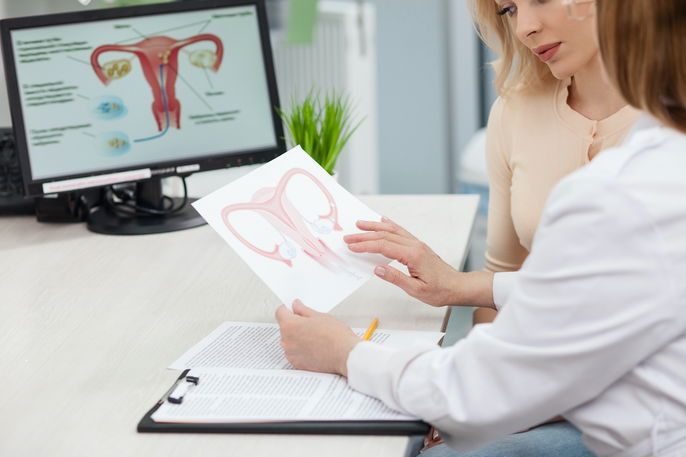What is it:
High testosterone in women can occur as a result of inappropriate testosterone supplementation, or as a result of a health condition (like PCOS or ovarian cancer). It can cause symptoms like facial hair, a lack of a period and voice changes.
Testosterone is a hormone that mainly produced in men, although it is produced in small quantities in the ovaries and suprarenal glands in women. Together with other female hormones, testosterone is important to ensure normal bone health and ovarian functioning.
It is important to consult a gynecologist or endocrinologist whenever women presents with symptoms of high testosterone levels, so that a diagnosis can be confirmed and appropriate treatment can be initiated.

Common symptoms
Some signs that may indicate high levels of testosterone in women are:
- Increased body hair, particularly on the face, chest and back
- Lack of period or irregular period
- Oily skin
- Excess acne
- Hair loss, similar to male pattern balding
- Voice changes
- Unintentional weight gain
- Increased muscle mass
- Decreased breast size
- Increase clitoris size
- Reduced libido
- Mood changes
In addition, high testosterone in women can cause changes to ovulation, leading to infertility.
Therefore, it is important to consult a gynecologist if you notice symptoms of high testosterone to determine the need for treatment.
Confirming a diagnosis
To confirm whether testosterone levels are high, a gynecologist will evaluate the presenting symptoms and order a blood test to determine circulating testosterone levels. The doctor may specifically order free testosterone and total testosterone levels.
In addition to verifying testosterone levels, the doctor may also order other tests, like 17-α-hydroxyprogesterone levels and DHEA levels, as well as complete imaging tests to rule out other possible causes.
If there is any suspicion that increased levels of testosterone are due to the presence of an ovarian tumor, the doctor can order further imaging and CA-125 tumor marker testing to identify any abnormal functioning in the ovaries.
Normal testosterone levels in women
Reference ranges for normal testosterone levels in women can vary with age and with each lab. The normal level of testosterone in women is typically between 17 to 70 ng/dL or 0.5 to 2.3 nmol/L.
Free testosterone levels in women can also vary with age and menstrual cycle phase. Therefore, results should be evaluated with a gynecologist within the woman’s clinical context.
Possible causes
High testosterone in women can be caused by normal life phases, like puberty or menopause. It is also common in women who take any type of testosterone supplements.
Very high levels of testosterone may be a sign of a health condition like:
- Polycystic ovarian syndrome
- Congenital adrenal hyperplasia
- Hirsutism
- Ovarian cancer
It is important to consult a gynecologist if you notice symptoms of high testosterone, as there are many factors that can contribute to this finding.
Treatment options
Treatment for high testosterone in women should be monitored by a gynecologist and will vary depending on the underlying cause. The treatment goal to ensure female hormones remain within normal ranges.
The main treatments that the doctor may advise to lower testosterone in women include:
- Oral contraceptives
- Antidiabetics, like metformin
- Diuretics, like spironolactone
- Corticosteroids
Increased testosterone levels caused by testosterone supplementation may require changes to dosing or discontinuation.
How to lower testosterone naturally
Some ways to lower testosterone levels naturally include drinking green tea every day, increasing intake of whole foods, and decreasing carbohydrate intake, like rice, pasta, potatoes and white bread.
In addition, exercising regularly, maintaining a healthy diet and reducing stress can also be important for regulating female hormones and regulating testosterone levels in women.





























